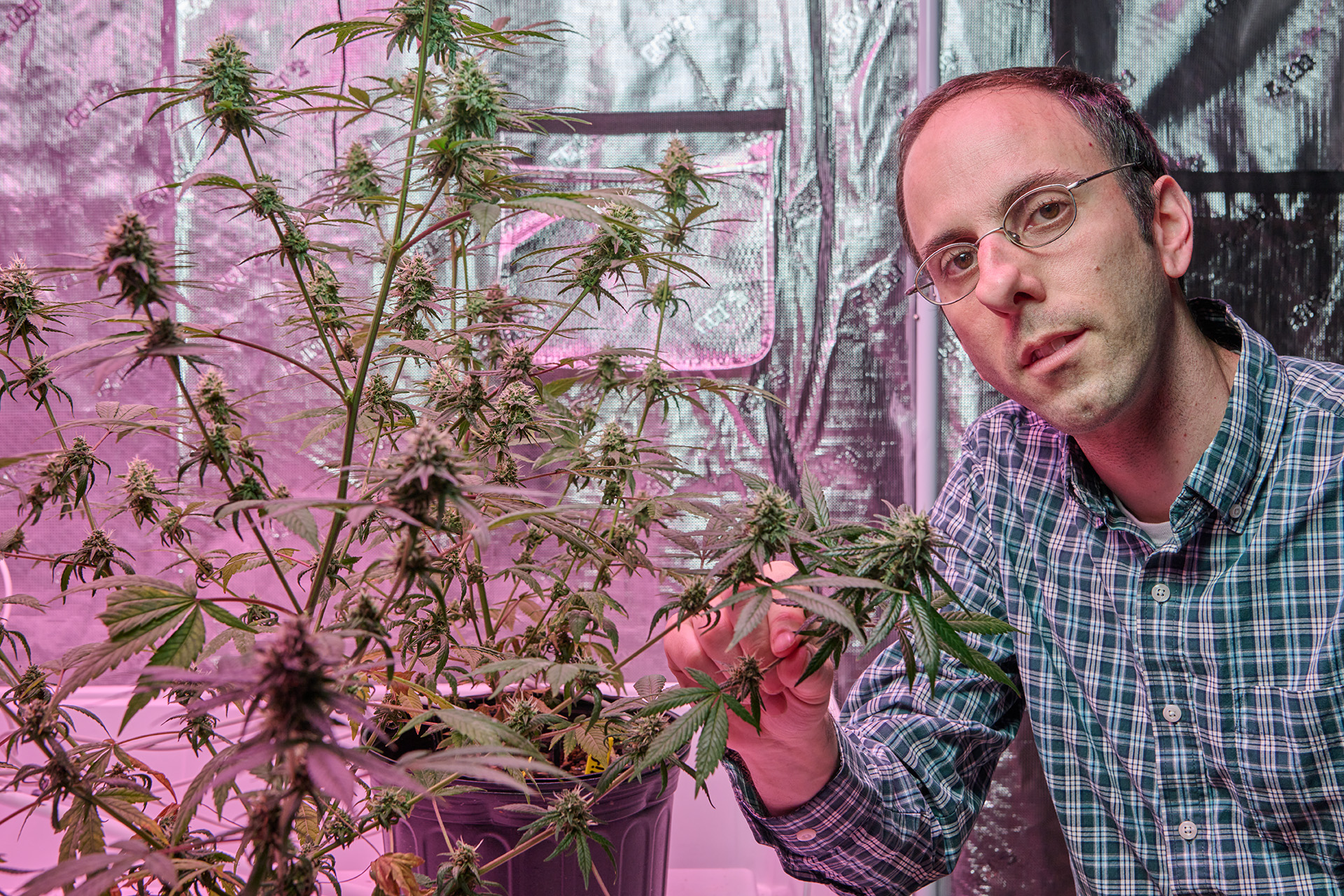SPSS 3680 Advanced Cannabis Horticulture: Cannabis Production

DeBacco and students work in the controlled laboratory greenhouse perfecting hands-on skills.
Matt DeBacco wants each of his students to come out of this class with the chemistry, horticulture, and business know-how for a successful grow-out
The Instructor:
A squash sprouting in a compost pile started Matt DeBacco '07 (CAHNR), '11 MS, '14 MS on a life of horticulture. Inspired by that compost volunteer, and never one to do anything by halves, he started growing giant pumpkins in high school. Over the subsequent 23 years he's analyzed the plants' genetics, presented at giant pumpkin research conferences, and broken the state record for biggest cucurbit (a type of gourd) twice. His personal-best pumpkin weighed in at 1,885.5 pounds.
"Anything I do, I tend to take all the way," he says.
DeBacco double majored in pathobiology and horticulture and minored in molecular and cellular biology. He pursued a master's in agronomy with a focus on suppressing powdery mildew on pumpkins, and after a short-notice stint at teaching (someone retired unexpectedly and he was pulled in from the research lab) he decided to take classes in education. He earned another master's from UConn — this time in education — and then a Ph.D. from Ashford University (now The University of Arizona Global Campus), while teaching science at Rocky Hill High School, something he still does.
He also kept up his pathobiology research at UConn, developing expertise in powdery mildew, a family of fungi that covers plant leaves with a white, powdery film when the weather turns cool and wet. Cannabis plants grown in greenhouses are also susceptible to powdery mildew. One day a colleague called him in for a consult, and DeBacco made the leap from cucurbits to cannabis.
"The basics are the same, whether pumpkin or cannabis. Total weight wins."
The Class:
This class is part hands-on horticulture, part business analysis, and part plant chemistry tutorial. Cannabis went from being an illegal plant that could get your real estate confiscated by the government to a lucrative business opportunity in a few short years. DeBacco wants every student to come away understanding what it takes to have a profitable grow-out, whether field-grown hemp or hothouse marijuana.
Most students come from CAHNR, but a significant minority are in other majors, most commonly business or pharmacy. Because they have different goals for taking the class, it has to cover a lot of ground. DeBacco does it in five units. He begins by examining the cannabis plant itself: its anatomy, species, naming system, the difference between hemp and marijuana, the different pharmaceutical chemicals cannabis can contain, and the legality of it on the federal and state levels. Cannabis genetics are discussed, as well as the difference between genotype (genes possessed by a plant), chemotype (what chemicals it makes), and phenotype (how it looks and grows). The second unit covers breeding cannabis and growing and propagating plants from seed or clone, and the third unit focuses on plant hormones, indoor versus outdoor growing, and producing the all-important flowers. Unit four focuses on drying and processing the raw plant material, and unit five on potential products and how to extract them, as well as various jobs in the industry, from growers and lab workers to salespeople and legal advisors.
Teaching Style:
DeBacco says he teaches the class choose-your-own-adventure style. First, students pick a hypothetical scenario to pursue. Since they cannot legally grow cannabis themselves, this can be anything from a single plant in a home greenhouse to 40-plus acres outdoors. The class is then divided into groups of students, who choose from two or more modules at each decision point. Will you grow from seed or clones? If from seed, will you direct seed in the field, or start transplants? If from clones, which variety and how will you propagate it? Will you grow indoors or out? The former requires a great deal of climate control and lighting; the latter requires soil analysis and fertilization. In both cases, the grower must minimize costs and maximize output.
The students track their choices, describe what they're going to do, and then justify those choices in a grower's log, which is part of their final grade.
"The grower's log can be a great artifact to show potential employers," since you aren't able to have grown cannabis before, DeBacco says.
Why We Want to Take It Ourselves:
DeBacco's leap from squash to cannabis shows that horticultural skills are transferable. Learning to clone a plant, calculate the business case for a greenhouse, and understand how light affects plant hormones is widely applicable, even if you have zero interest in growing cannabis. His teaching style means you can tailor the class to your specific interests.
"It's the info age, you can look anything up. But can you apply that to a situation?
By Kim Krieger
Photo by Peter Morenus

Leave a Reply